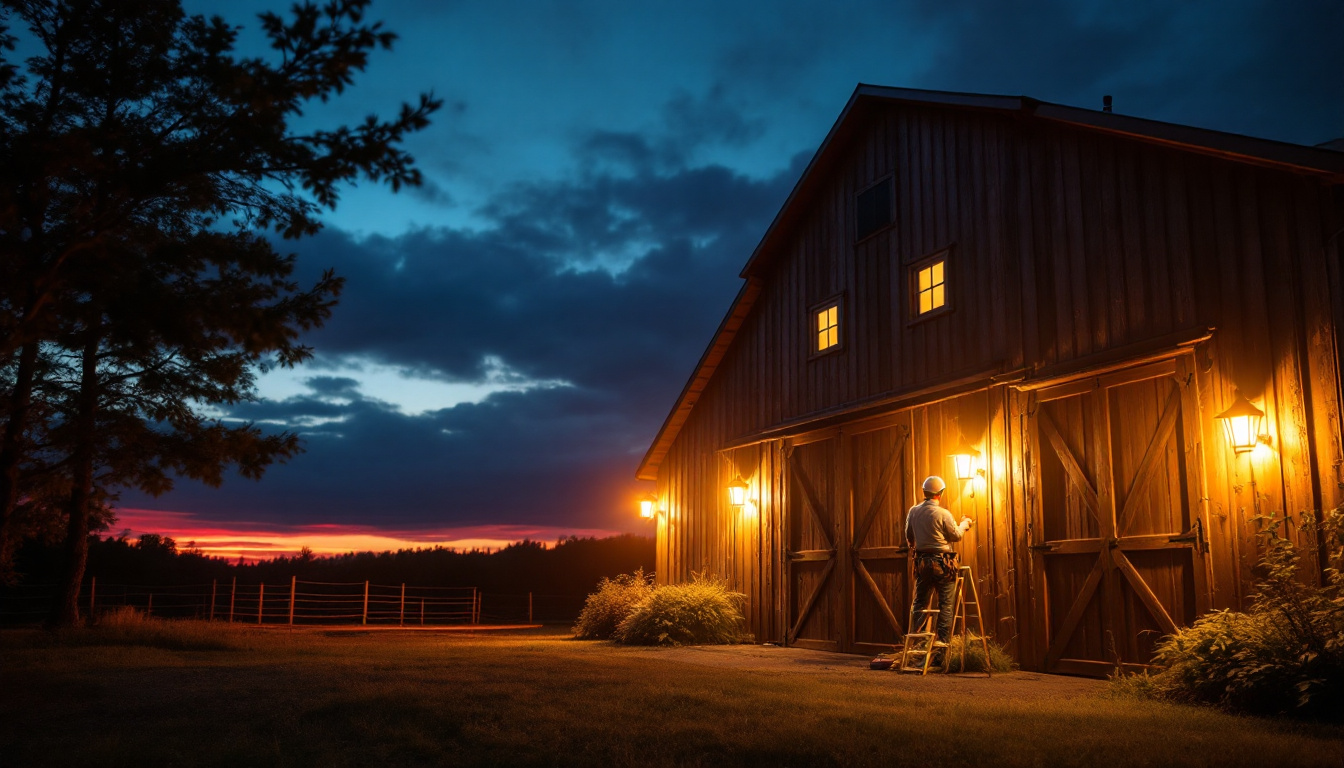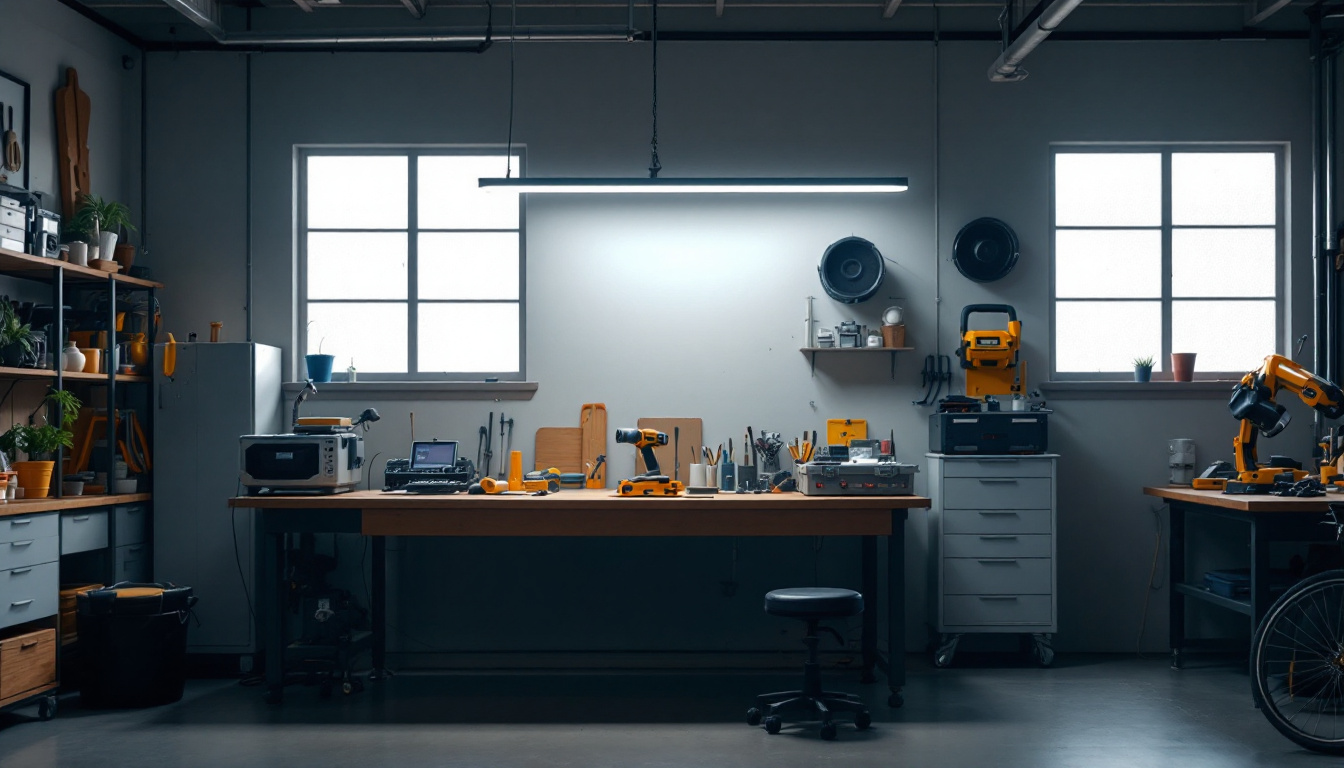

As the demand for sustainable and energy-efficient solutions continues to rise, solar powered barn lights have emerged as a popular choice for both residential and commercial applications. For lighting contractors, understanding the benefits, installation processes, and key features of these lights is essential. This article delves into the fundamentals of solar powered barn lights, providing valuable insights for lighting professionals.
Solar powered barn lights are designed to harness sunlight and convert it into electricity, providing a reliable source of illumination without the need for traditional wiring. These lights are particularly useful in rural areas where access to electricity may be limited or expensive. They are also an eco-friendly option, reducing reliance on fossil fuels and lowering energy costs.
At the heart of solar powered barn lights is photovoltaic technology. Solar panels, typically mounted on the roof or a nearby structure, capture sunlight and convert it into direct current (DC) electricity. This electricity is then stored in batteries, allowing the lights to operate even during cloudy days or at night.
Most solar barn lights come equipped with a built-in light sensor that automatically turns the lights on at dusk and off at dawn, ensuring optimal energy usage. Some advanced models also feature motion sensors, enhancing security and energy efficiency by only activating when movement is detected. This feature not only conserves energy but also provides an added layer of safety, deterring potential intruders and ensuring that the barn is well-lit when needed most.
There are several advantages to using solar powered barn lights, making them an attractive option for lighting contractors and their clients. First and foremost, they offer significant cost savings over time. While the initial investment may be higher than traditional lighting options, the lack of electricity costs and minimal maintenance requirements make them a financially sound choice in the long run.
Additionally, solar powered barn lights are environmentally friendly. They reduce carbon footprints by utilizing renewable energy sources, contributing to a more sustainable future. This eco-conscious approach can also be a selling point for clients who prioritize green solutions. Furthermore, the installation of solar lights can often be completed without the need for extensive construction or electrical work, making them a convenient choice for those looking to enhance their barn’s lighting quickly and efficiently. The portability of these lights also allows for flexibility in placement, enabling users to adapt their lighting solutions as needs change over time.
When selecting solar powered barn lights, several key features should be taken into account to ensure optimal performance and satisfaction. Understanding these aspects can help lighting contractors make informed recommendations to their clients.
The brightness of solar powered barn lights is typically measured in lumens. For effective illumination, it is crucial to choose lights that provide adequate brightness for the intended application. For example, a barn that requires bright lighting for tasks such as feeding animals or maintenance work may need lights with higher lumen output compared to decorative lighting.
Contractors should consider the specific needs of their clients and recommend lights that strike a balance between energy efficiency and brightness. It is also important to note that the lumen output may vary depending on the quality of the solar panel and battery used in the light.
The battery capacity of solar powered barn lights directly affects their runtime. A larger battery can store more energy, allowing the lights to operate longer during the night or on cloudy days. When selecting lights, it is essential to evaluate the battery specifications and ensure they align with the expected usage patterns.
Contractors should also consider the average sunlight exposure in the area where the lights will be installed. In regions with limited sunlight, opting for lights with higher battery capacities may be necessary to ensure consistent performance.
Given that barn lights are often installed in outdoor environments, durability and weather resistance are critical factors. Lighting contractors should look for products made from high-quality materials, such as aluminum or polycarbonate, which can withstand harsh weather conditions, including rain, snow, and extreme temperatures.
Additionally, many solar powered barn lights come with an IP (Ingress Protection) rating, indicating their resistance to dust and water. A higher IP rating signifies better protection, making it a key consideration for outdoor installations.
The installation of solar powered barn lights is generally straightforward, but it requires careful planning and consideration. Lighting contractors should follow a systematic approach to ensure optimal performance and longevity of the lights.
Before installation, conducting a thorough site assessment is essential. This involves evaluating the location for adequate sunlight exposure, determining the best mounting positions, and identifying any potential obstructions, such as trees or buildings that may cast shadows on the solar panels.
During the site assessment, contractors should also consider the specific lighting needs of the barn. This includes determining the desired brightness, the number of lights required, and any additional features, such as motion sensors or remote controls.
Proper mounting and positioning of solar powered barn lights are crucial for maximizing their efficiency. Solar panels should be installed at an angle that allows them to capture the most sunlight throughout the day. In general, a south-facing orientation is ideal in the northern hemisphere, while a north-facing orientation is preferable in the southern hemisphere.
When mounting the lights, ensure they are securely fastened and at an appropriate height to provide effective illumination without being obstructed. This may involve using brackets or poles, depending on the specific installation requirements.
Once the lights are installed, it is essential to conduct a thorough testing process. This includes checking the functionality of the solar panels, batteries, and lighting components. Ensuring that the lights turn on and off as expected, and that they provide adequate illumination, is critical for client satisfaction.
Maintenance for solar powered barn lights is minimal, but it is still essential to periodically check the solar panels for dirt or debris that may obstruct sunlight. Cleaning the panels can significantly improve their efficiency and prolong the lifespan of the lights.
Solar powered barn lights are versatile and can be used in various applications, making them suitable for a wide range of clients. Understanding these applications can help lighting contractors tailor their offerings to meet specific needs.
In agricultural settings, solar powered barn lights are invaluable for illuminating barns, stables, and storage areas. They provide essential lighting for farmers and workers during early morning or late evening tasks, such as feeding animals or maintaining equipment.
Moreover, these lights can enhance security by illuminating the perimeter of farms and barns, deterring potential intruders and ensuring the safety of livestock and equipment.
Homeowners with barns or outbuildings can also benefit from solar powered barn lights. These lights can enhance the aesthetic appeal of properties while providing practical illumination for outdoor gatherings, gardening, or recreational activities.
Additionally, solar powered lights can be an attractive feature for potential buyers, as they reflect a commitment to sustainability and energy efficiency.
For commercial properties, solar powered barn lights can be utilized in various ways, from illuminating parking lots to enhancing the visibility of signage. Businesses that prioritize sustainability can leverage solar lighting as part of their marketing strategy, appealing to environmentally conscious consumers.
Furthermore, the reduced operational costs associated with solar lighting can provide significant savings for businesses, making them an attractive investment.
While solar powered barn lights offer numerous benefits, there are also challenges and considerations that lighting contractors should be aware of. Addressing these issues proactively can lead to more successful installations and satisfied clients.
One of the primary challenges associated with solar powered barn lights is the initial investment. Although the long-term savings on energy bills can offset these costs, some clients may be hesitant to invest upfront. Lighting contractors should be prepared to discuss the financial benefits and return on investment that solar lights can provide over time.
Offering financing options or highlighting available incentives for renewable energy installations can also help alleviate concerns about initial costs.
Another consideration is the performance limitations of solar powered barn lights, particularly in regions with limited sunlight. Contractors should be transparent about these limitations and recommend products with larger battery capacities or additional features, such as hybrid options that can utilize grid power when necessary.
Educating clients about the importance of proper placement and maintenance can also enhance the performance and longevity of solar powered lights, ensuring they meet the expected lighting needs.
Solar powered barn lights represent a forward-thinking solution for lighting contractors seeking to provide sustainable and efficient lighting options. By understanding the technology, benefits, key features, and installation processes, contractors can effectively meet the needs of their clients while contributing to a greener future.
As the market for renewable energy solutions continues to grow, staying informed about advancements in solar technology and lighting design will be essential for contractors aiming to remain competitive. Embracing solar powered barn lights not only enhances service offerings but also positions contractors as leaders in the transition to sustainable energy solutions.
Ready to elevate your lighting solutions with the efficiency and sustainability of solar powered barn lights? Look no further than LumenWholesale, where we provide lighting contractors with the highest quality, spec-grade lighting products at unbeatable wholesale prices. Say goodbye to middleman markups and hello to superior lighting that meets the highest industry standards. With our hassle-free bulk buying and free shipping, you can ensure every project shines brightly at the best value. Don’t compromise on quality or affordability. Discover wholesale lighting at the best value today and light up your work with confidence and convenience.

Explore how LED tape strip lighting is revolutionizing energy efficiency in homes and businesses.

Discover the step-by-step process of converting canned lights to recessed lights and gain a competitive edge in securing more lighting contracts.

Discover the essentials of wall mount LED lights in just five minutes.

Discover the common oversights lighting contractors make with 8 ft shop lights.
Get notified when NEW deals are released.
Optimize your budget with wholesale discounts.
Only top-quality, specification-grade lighting products.
No additional costs at checkout - what you see is what you pay.
We understand the unique needs of contractors.